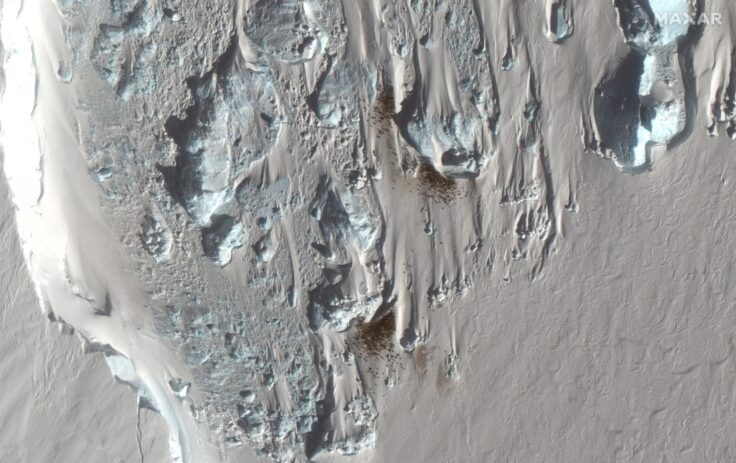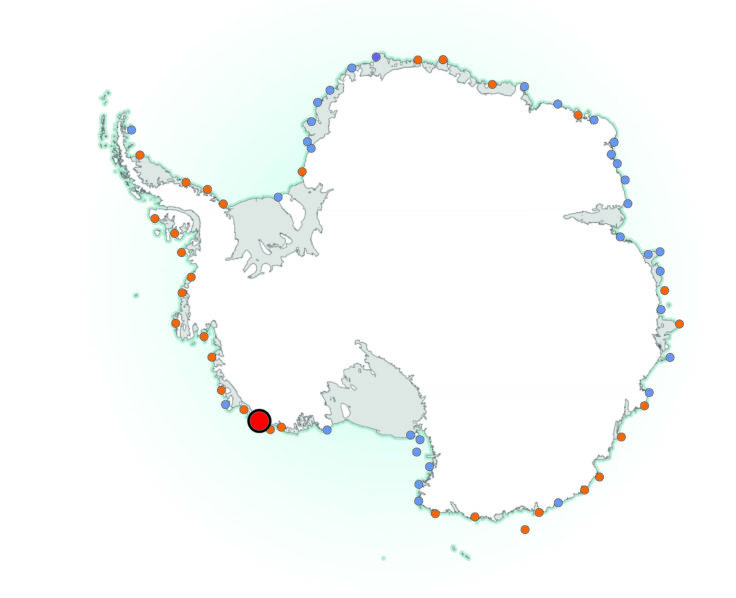Scientists have discovered a new emperor penguin colony in Antarctica using satellite mapping technology. This new colony makes a total of 66 known emperor penguin colonies around the coastline of Antarctica, with exactly half having been discovered by satellite imagery.
The team studied images from the European Commission's Copernicus Sentinel-2 satellite mission, which were compared to and confirmed by high resolution images from the Maxar WorldView-3 satellite. They identified the colony from the birds' guano stains which are brown in colour, and easier to identify alongside the ice and rock. The new site, at Verleger Point West Antarctica, houses around 500 birds and is located at 74° 42' S, 136° 11'W.

Emperor penguins need sea ice to breed and are located in areas that are very difficult to study because they are remote and often inaccessible and can experience temperatures as low as −60°C (−76°F). For the last 15 years, British Antarctic Survey (BAS) scientists have been looking for new colonies by searching satellite imagery for their guano stains on the ice.

Lead author Dr Peter Fretwell, who studies wildlife from space at BAS says:
"This is an exciting discovery. The new satellite images of Antarctica's coastline have enabled us to find many new colonies. And whilst this is good news, like many of the recently discovered sites, this colony is small and in a region badly affected by recent sea ice loss".
Emperor penguins are known to be vulnerable to loss of sea ice, their favoured breeding habitat. With current projections of climate change, this habitat is likely to decline the most recent projects suggest that, under current warming trends, 80% of colonies will be quasi-extinct by the end of the century.
The research was part of the Wildlife from Space project, funded by UKRI-NERC with a contribution from WWF.
Copernicus Sentinel-2 is one of the satellite missions that the European Space Agency develops and operates on behalf of the European Commission's Copernicus environmental monitoring programme. Sentinel-2 has been collecting images of Antarctica since 2016 following the request from SCAR, the Scientific Committee on Antarctic Research. Maxar Technologies is a commercial satellite provider. The featured image that confirmed the find is a 30 cm resolution WorldView-3 image of the site dated 18 October 2021.






